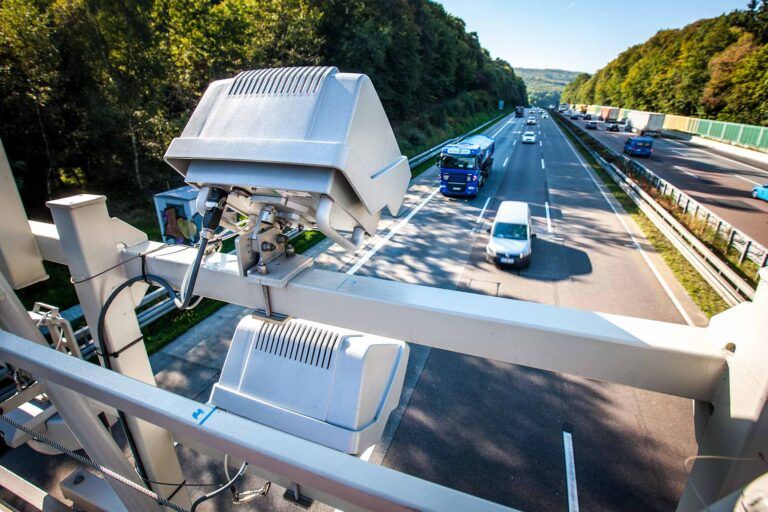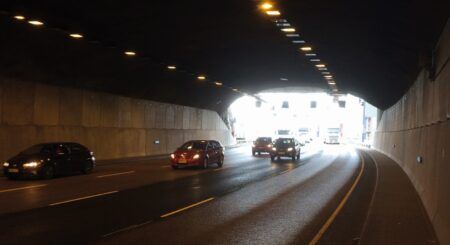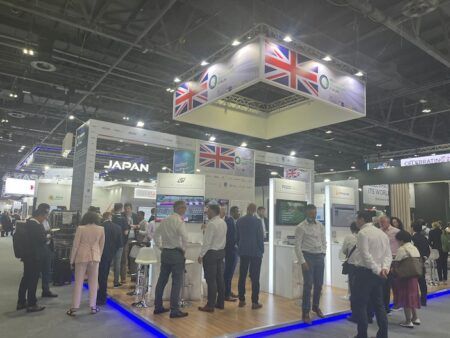At the ITS World Congress in Dubai this week (September 16-20) Vitronic (Booth H6-C7-A) is showcasing its new advanced video-based traffic cameras, which use AI to remove the need for laser triggering, thereby delivering more cost-effective solutions for its customers.
Advances in AI are a driver in almost every aspect of modern life. This is particularly true in the field of mobility where AI is enabling new applications that support and fuel the traffic transition, as is explored in this feature
The utilization of AI in traffic applications provides easy access to more powerful hardware including faster, more compact and performant processors, as well as advanced camera technology. Industrial cameras today have more capabilities than the human eye – from color recognition and a wide field of view to identifying small details and vision in the infrared spectrum.
With this hardware available, it sits above all the software that determine the possibilities of video-based traffic enforcement. Particularly promising in this regard are neural networks such as convolutional neural networks (CNNs) which we use at Vitronic. With CNNs, objects captured are more differentiated and can be captured within milliseconds.
Road safety in view
To illustrate the benefits of AI for traffic, there are two key areas of focus, the first being traffic safety. Intersections and junctions, for example, account for nearly half of all road-related injuries or fatalities in urban settings, and the traffic transition is making road scenarios complex.
Video-based enforcement systems using AI keep up with this change as they allow multiple violations to be captured simultaneously. Applications include red light enforcement, documentation of turning violations and surveillance of crosswalks by automatically distinguishing between pedestrians, cyclists and motorized vehicles. This option improves the safety of vulnerable road users (VRU).
Recent research shows that the risk of accidents increases twofold when talking on the phone, sixfold when texting and twelve-fold when typing a phone number. A solution to this widespread driving behavior is a fully automated enforcement system using AI-based software. The software is trained with images to recognize when the driver of a vehicle is holding a mobile phone. When implemented, this software has the potential to significantly reduce the risk of accidents.

Advanced urban traffic management
The second key area that highlights the progress AI brings to the table is the optimization of traffic in urban settings. In 2022, drivers in major German cities spent an average of 40 hours stuck in traffic jams. Furthermore, 96% of the urban population in the EU was exposed to air pollution levels higher than the WHO limits in 2020.
Driveway regulations and restrictions such as low emission zones, lanes for public transport or high-occupancy vehicle lanes make a difference however enforcement is often a challenge. How can we ensure that drivers do not use the bus lane? How can we ensure that only authorized vehicles enter an environmental zone? Even more difficult, how can we ensure drivers are not traveling alone in a high-occupancy vehicle lane? Once again, AI provides a solution. Not only can it read license plates, but it is also capable of capturing other information about a vehicle – from the type of automobile to the number of passengers. This creates a data basis that helps to implement effective measures.
A technology worthwhile
Besides their application, diversity and performance, AI and video-based traffic systems require a comparatively low investment for acquisition and implementation, and result in faster ROI. With this new affordable and effective traffic system, more states and municipalities can utilize them and in turn support the traffic transition.
This article also appears in the September 2024 edition of TTi magazine





